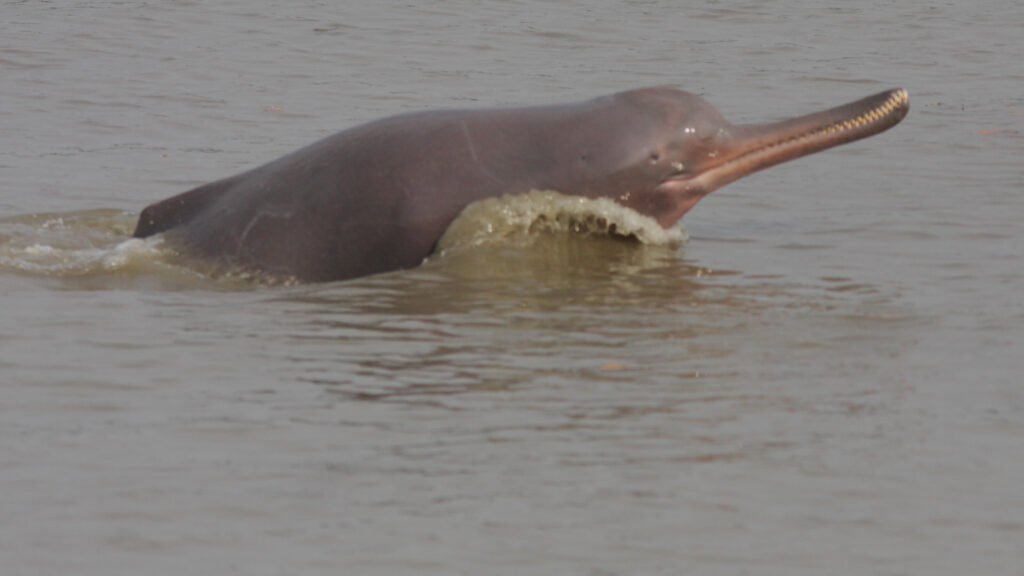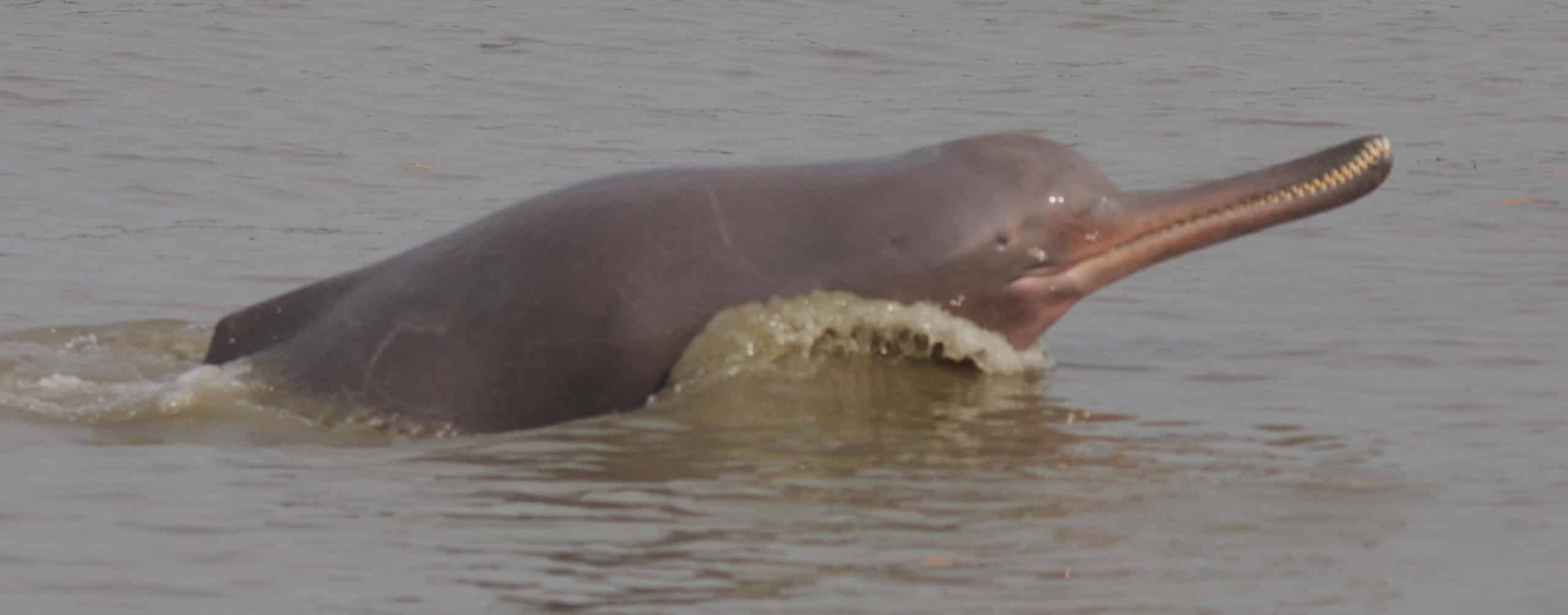What comes to mind when you think about a dolphin? Most people imagine dolphins leaping and diving in the open ocean, but a few species prefer a more leisurely lifestyle in rivers.
Freshwater dolphins look much different than their saltwater cousins – they have smaller bodies and dorsal fins to navigate through shallow waters, along with longer beaks to catch prey even in murky conditions. Since they only live in a few river systems across South America and South Asia, in much closer proximity to humans, river dolphins often face more threats as well. The Yangzte river dolphin (Lipotes vexillifer), or baiji, may even be extinct.
International Freshwater Dolphin Day, held annually on October 24th, aims to raise awareness of the plight of these species and the ways that people are working together to protect them. In honor of the occasion, the Conservation Optimism team created an infographic set to celebrate two of these charismatic cetaceans: the Ganges river dolphin (Platanista gangetica) and the Indus river dolphin (Platanista minor).

A Ganges river dolphin surfaces. Photo by National Oceanic and Atmospheric Administration.
Locally known as susu, sisu, or shushuk, the Ganges river dolphin is primarily found in the Ganges-Brahmaputra-Meghna and Karnaphuli-Sangu river systems of India and Bangladesh, though some may still live in Nepal’s Karnali and Sapta Kosi rivers as well. The Indus river dolphin, locally known as the bhulan, is primarily found in the lower Indus river of Pakistan, with a smaller population in the Beas river of India.
These two species were once thought to be subspecies of one South Asian river dolphin. Besides some minor colour differences, they do look pretty similar – the main physical distinction between them is their different numbers of teeth. Research now suggests that the two species genetically diverged over 550,000 years ago.
Plus, it’s impossible to mistake the two in the wild. Their populations are completely isolated from each other!

A swimming Indus river dolphin. Photo by flickkerphotos.
The Ganges and Indus river dolphins likely kept their similar traits due to their similar environments. Like all dolphins, they rely on echolocation to hunt and navigate in their muddy surroundings. To make up for their poor vision, they produce high-pitched clicks and squeaks, then listen for the sound to bounce back and tell them what’s around them.
Both river dolphins also share similar challenges, including pollution, poaching, and habitat loss. Luckily, many people want to help their unique aquatic neighbors!
Researchers collaborate with local communities to study the Ganges river dolphin, then use what they discover to create more effective conservation strategies. Analyses suggest that populations are increasing in some places, so conservationists can learn from those success stories and replicate them in other parts of their river systems.
Meanwhile, studies indicate that awareness campaigns have led people to adopt more biodiversity-friendly behaviors along the Indus river, reducing threats like chemical poisoning, poaching, and harmful fishing practices. As a result, Indus river dolphin populations are rising too.
While there is plenty left to do to keep Ganges and Indus river dolphins swimming in the future, International Freshwater Dolphin Day is intended to highlight the positive progress made so far. You can join the celebration by checking out our infographics comparing and contrasting the two species, then share them with your pod to help spread awareness!












